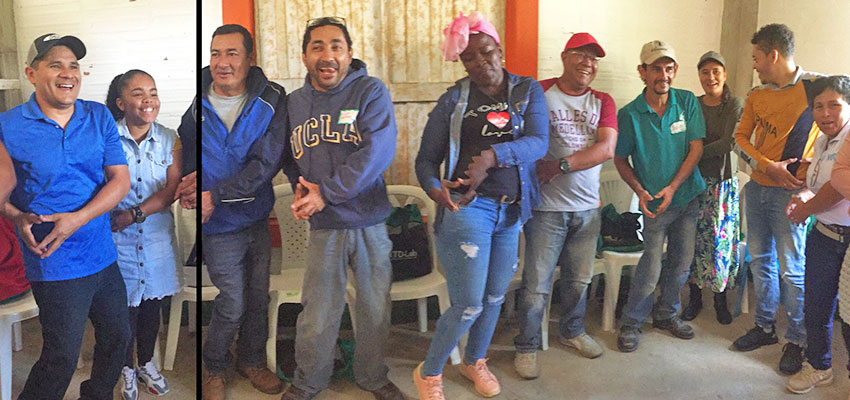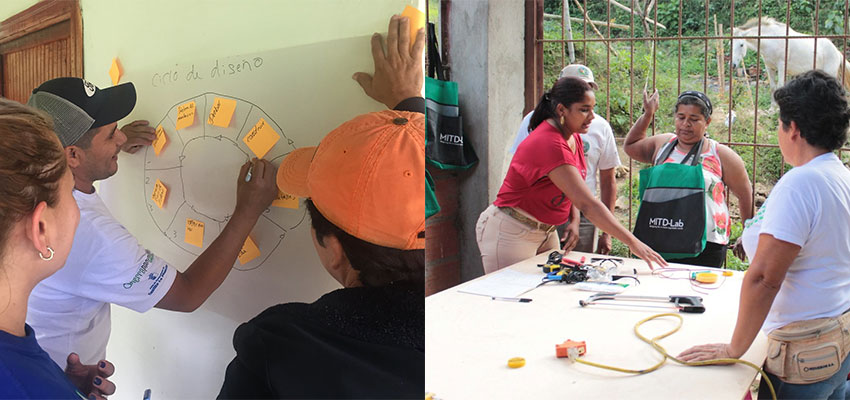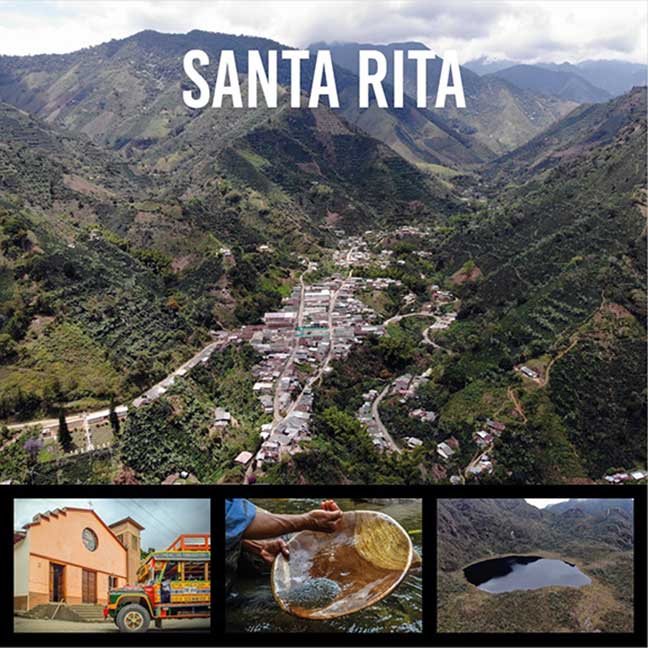
To promote safer, healthier, and more equitable participation in regional gold supply chains, MIT D-Lab has been training Colombian miners and community leaders to develop sustainable solutions to Artisanal and small-scale gold mining (ASGM) related challenges. MIT D-Lab is leveraging its expertise and longstanding Colombian partnerships to develop a comprehensive economic diversification program that generates opportunities for co-creating technology and business solutions with multiple stakeholders, including miners.
In the fall of 2019, D-Lab began partnering with C-Innova, Universidad Nacional and Uniminuto to host two Creative Capacity Building (CCB) workshops that develop technologies to improve livelihood opportunities with small-scale miners in four target communities: El Bagre, Santa Rita, Zaragoza, and Niche. To continue these efforts, the project team recently hosted an inspiring CCB Training of Trainers (ToT). The workshop was organized by Margarita Gamarra of Universidad Nacional, facilitated by a team from C-Innova (Alex Freese, Liliana Murcia, and Angela Calderon) as well as D-Lab (Amy Smith and Sher Vogel); and supported by Libby McDonald and Melissa Mangino. The workshop ran from January 13 to January 24, 2020 in a small, mountainous town outside of Andes, Colombia called Santa Rita. The goal of the training was to give small-scale miners and community leaders an opportunity to learn about and practice facilitating CCB activities so they could begin using these methods to diversify the local economy as part of the D-Lab ASGM Inclusive Economies project, a program led by D-Lab Lecturer and Inclusive Economies Specialist Libby McDonald, In Antioquia, Colombia.

Week 1 - Facilitator Training
The first week of the workshop included 15 facilitators-in-training – five from home town of Santa Rita, eight from the the Bajo Cauca region working with Uniminuto and Mujeres del Oro, and two from the Innovatepec innovation center in El Salvador, established with support from D-Lab in 2019. All 15 facilitators-in-training had participated in a CCB workshop in the past semester. As Amy explained during our first morning circle of the week, the goals of this first week were to:
- Understand the history and philosophy of CCB in a way to be able to share it clearly and be apart of the future of it
- Understand CCB pedagogy (the curriculum and the theory behind it) so you can use it to make new activities
- Feel more comfortable using CCB tools and teaching others to use the tools
- Really know and love the design process
- Understand the art and science of selecting CCB projects and planning for CCB logistics and follow-up
During the week, facilitators-in-training had the opportunity to dig deeper into the design process as well as to learn about and practice facilitating key CCB activities. Facilitators-in-training worked in small groups with others from their community to prepare and deliver practice sessions. Then they would pair with another group and receive feedback. (A number of people noted in their surveys that some of the most valuable parts of the week were learning how to listen and co-facilitate, how to give useful feedback, and how to receive feedback effectively.) Many of the facilitators-in-training in this group were already experienced users of CCB tools, but they learned additional practical teaching tips on how to teach others to use CCB tools accurately and safely. Moreover, facilitators-in-training also learned about the specific logistics and soft skills it takes to scope projects and host a CCB in your town including what you need to prepare and what it takes to support all the projects that come out of a CCB workshop afterward, including defining and launching a local Innovation center.

At the beginning of the week, one person bravely confessed how excited she was about the project, but how nervous she was to speak in front of other people. When asked if anyone else felt the same way, over a third of the group raised their hands. By the end of the week, in the group debrief, every one of them mentioned feeling much more confident not only in their knowledge of the material and facilitating, but in public speaking in general.
Week 2 - Practice facilitating a CCB workshop
For the second week, we said goodbye to Amy and a few facilitators who had to head back home and we said hello to 30 new ASGM miners from Santa Rita who were eager to participate in a CCB workshop. The 13 remaining facilitators-in-training split into two groups as we facilitated two CCBs concurrently in two different parts of the finca where we were staying.

The goal for this week was threefold. The goal for participants was to learn about the CCB design process as a way to collectively solve challenges and create new products that might eventually turn into small businesses. The goal for facilitators-in-training was to practice co-facilitating sessions they had learned about the week before and receive daily coaching and feedback from the C-Innova facilitation team and myself. And a personal goal for me was to observe their facilitation and coaching, provide feedback, and learn from the C-Innova team’s specific approach to share with other facilitators in our CCB network.
By the end of the week, participants developed five projects and facilitators-in-training had a very clear understanding of the design process, what it takes to facilitate a CCB workshop, and an idea of what follow-up coaching and practice they need to feel comfortable facilitating a full CCB on their own. As for me, I had some quality coaching times with the C-Innova team and was able to learn a few key tips for improving facilitation of the CCB design process (for example, inviting people to build on each other’s sketch models during the experimentation phase to develop five improved options to select from).
Next steps
Since the TOT workshop, facilitators-in-training have returned home and participants have taken home their prototypes. From here, there are a variety of next steps scheduled.
Launching Innovation Centers
Between now and the end of March, facilitators-in-training will work with D-Lab staff and other Latin American innovation centers to clarify participants’ vision for their local innovation centers, how best to organize them, and what activities they might offer.
Local Innovations Expo
In late March, C-Innova will facilitate an expo in Medellin to showcase examples of zero-mercury mining innovations, alternative technology that provide promising opportunities for economic diversification, and selected technologies that were developed through the larger series of CCB workshops offered through this project with the aim of inspiring 20 program participants, and others.
Anchor Institution Study
MIT D-Lab and Uniminuto are completing a study in Andes to identify and map the most prominent regional businesses and organizations and their procurement patterns to understand which CCB innovations have the most promising opportunities to thrive within the local entrepreneurial ecosystem.
Certification of Creative Capacity Building Trainers
Facilitators-in-training will be facilitating one more CCB with mentorship and coaching from C-Innova staff and then continuing onward facilitating CCB workshops on their own.
Creative Capacity Building for Business (CCB-B) Training
In early June, we will all reconvene in Santa Rita to teach another dimension of the design process - how to use the CCB design process, mindsets, and principles to design new local businesses.
¡Versión en español aquí!

More information
MIT D-Lab Inclusive Regional Economies
Building Inclusive Economy with Small Scale Miners - Colombia
MIT D-Lab Creative Capacity Building
Contact
Libby McDonald, MIT D-Lab Lecturer and Inclusive Economies Specialist
Sher Vogel, MIT D-Lab Global Trainings Manager

